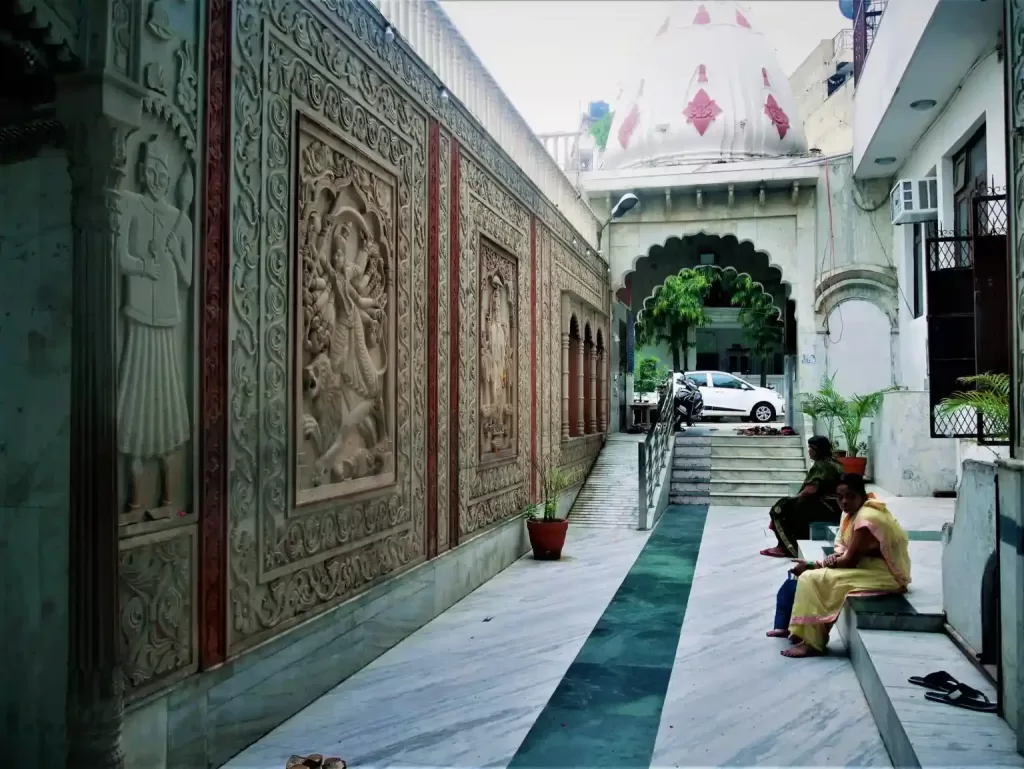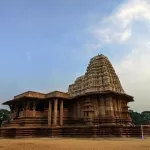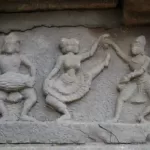Yogmaya Temple Mehrauli, one of Delhi’s oldest cities. Is situated in South Delhi and has witnessed numerous conflicts between various dynasties over the centuries. The area has evolved over time, with each period leaving its unique mark on its development. Rich in history, Mehrauli is home to numerous monuments and structures from different eras. According to Ranjana Mittal’s case study, Sacred Memory – Memory of Temples in Delhi. Certain sites near the “axis of the world” hold significant cultural value despite their lack of grand architecture. One such site is the Yogmaya Temple, located in Mehrauli.
ALSO READ: Brahmapuri: A Pillar of Knowledge in Goa’s Glorious History
The Yogmaya Temple is located just 500 yards from Mehrauli’s iconic Qutub Minar, within the walls of Lal Kot. It is one of the few surviving remnants of the original twenty-seven temples that once stood in the Qutub complex. Which were demolished in the 12th century to assert Ghurid Turk dominance. Historian Swapna Liddle, in her book The Qutub Minar Complex and the Village of Mehrauli. Highlights that the Yogmaya Temple and the Jain Dadabari Temple were spared due to their strong popular support. Interestingly, the Yogmaya Temple is believed to be one of Delhi’s oldest temples. With its origins dating back to the Mahabharata period.
History and Architecture of the Yogmaya Temple
According to folklore, the Yogmaya Temple was originally built by King Yudhishthira. The eldest of the five Pandava brothers from the epic Mahabharata. After his triumph in the legendary Kurukshetra war. Some traditions also claim that the temple was initially constructed by Lord Krishna and later expanded by Anangpala Tomara. The Tomara dynasty ruler. While the original ancient temple no longer exists. Remnants of its structure may still be found within the Qutub Minar complex. Over time, the temple was rebuilt, and it continues to serve as a place of worship for devotees.
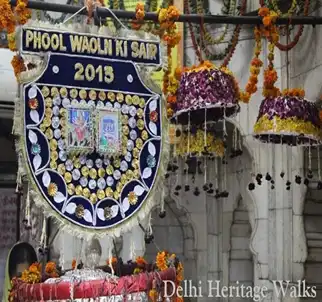
Some accounts suggest that the Yogmaya Temple was first restored in the 16th century by Hindu ruler Hem Chandra Vikramaditya. Who governed during the Adil Shah Suri era of the Sur Empire. Later, in 1827, Seth Sidhu Mal, a prominent official from Chandni Chowk serving under Emperor Akbar Shah II of the Mughal Empire. Undertook the construction and rebuilding of the temple in its present form. Subsequent improvements were carried out by the temple trust in later years.
Adjacent to the temple stands a robust structure that appears to be of similar age or slightly newer than the temple itself. The temple rises approximately 42 feet from its floor—originally paved with red stone about 20 years ago and now covered in marble—to its copper-gilded pinnacle (Carr, 1876). While the current structure of the temple is relatively simple, it features intricate carvings near the entrance, depicting Lord Vishnu, Goddess Lakshmi, Goddess Durga, and Shesha Naga, which add to its artistic charm.
Architectural Features and Legends of the Yogmaya Temple
An unusual architectural feature of the temple is a large rectangular structure called the “Bhandar Graha,” which was built around it and is now used as a food storage facility. Interestingly, this chamber is believed to have been constructed in the 17th century during the reign of Aurangzeb, the sixth Mughal emperor, who reportedly attempted to convert the temple into a mosque. This intention is evident in the design, as mosques typically have elongated chambers, whereas temples are traditionally square in shape.
This idea is further reinforced by the presence of a dome-shaped ceiling over the chamber. Kuldeep Mishra, the temple’s chief pujari, shared an intriguing account, stating, “Aurangzeb hired laborers for this purpose, but they cut their hands at night, and whatever work was accomplished during the day would mysteriously disappear overnight” (Yogmaya Temple, a Sign of Unity, Hindustan Times, Latest News Delhi).
The temple’s presiding deity is Goddess Yogmaya, also known as Jogmaya. She is revered as the goddess of illusion and purity and is believed by Vaishnavites to be the source of Lord Vishnu’s ultimate power. Described in the Bhagavata Purana and Devi Mahatmya, she is portrayed as the sister of Lord Krishna, the daughter of Yashoda and Nanda, and a manifestation of Adi Shakti—the supreme goddess in Shaktism and the most benevolent aspect of Goddess Durga. She is also worshipped by names such as Vindhyavasini, Ekanamsha, Mahamaya, and Mahalakshmi.
The Divine Legend of Goddess Yogmaya and the Sacred Black Stone of Mehrauli
As per legend, when Krishna was born in the prison, he was secretly exchanged for Yogmaya, the eighth child of Devaki and Vasudeva. Kamsa, Devaki’s brother, attempted to kill the infant by hurling her onto a stone slab, mistakenly believing her to be Devaki and Vasudeva’s child. At that moment, she revealed her true form, warned Kamsa of his impending death, and vanished into thin air. Local priests and residents believe that the goddess’s body was then divided into three parts.
According to the legend, Yogmaya’s feet transformed into lightning, while her torso fell in Vindhyachal, located in the Mirzapur district of Uttar Pradesh. Here, the renowned Vindhyavasini Temple was established. Her head is believed to have fallen in Mehrauli, within the Aravali Ranges of Delhi (near Sanjay Van), where she manifested as a black stone in her pinda form, marking the site of the Yogmaya Temple. This tale parallels the legends associated with other Shakti Peetha temples in India, such as the Kamakhya Temple in Assam, where different parts of Goddess Sati’s body are said to have fallen and appeared as sacred pindas.
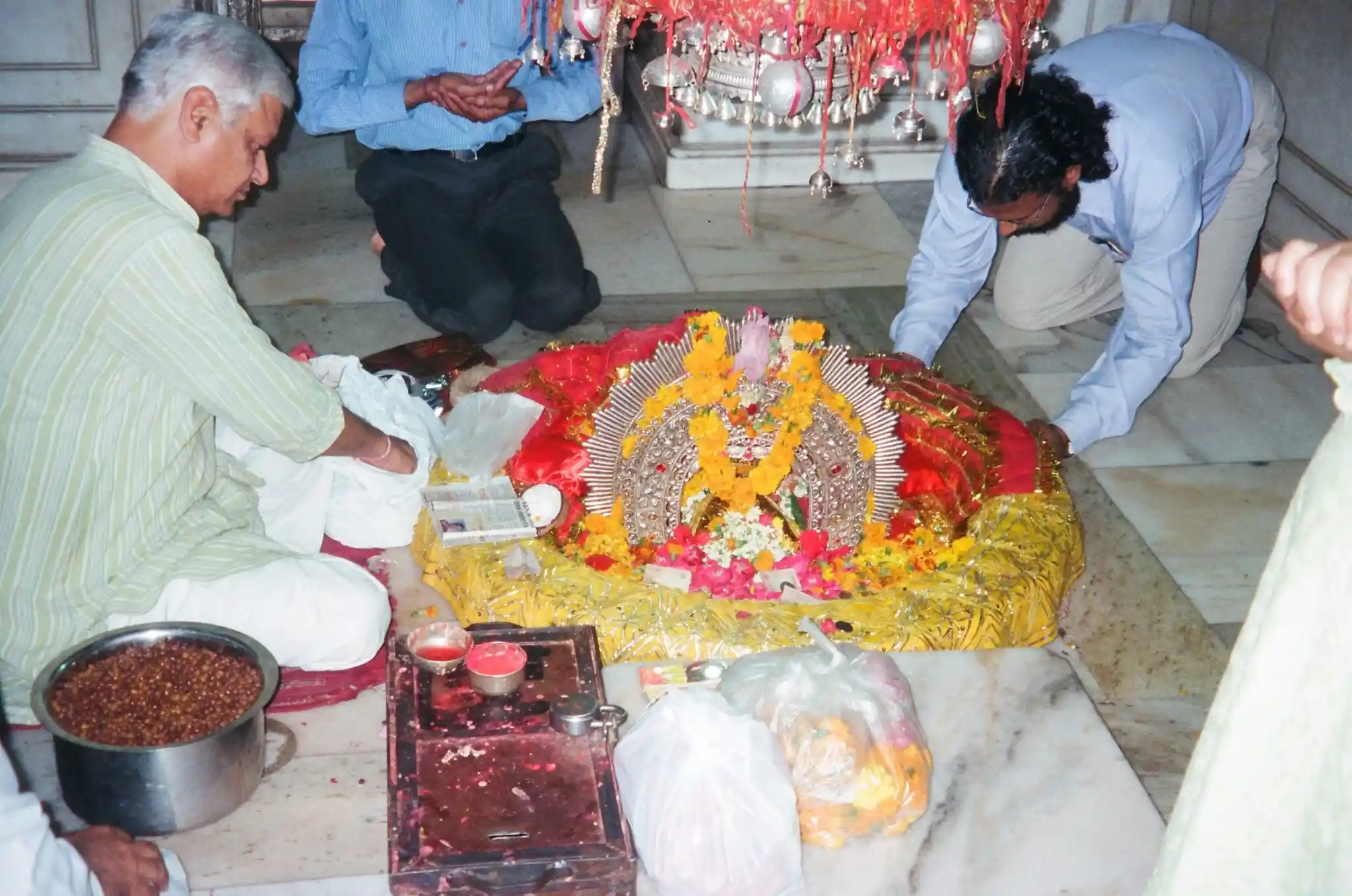
The villagers and priests are steadfast in their belief that Lord Krishna himself constructed the temple, which is why it is known as Siddha Peetha Shri Yogmaya Mandir. The black stone, housed in a chamber approximately seventeen feet square, is framed by a marble entrance. The temple features the typical truncated pyramid roof with slightly curved sides. The sacred stone is carefully draped in tinsel and fabric and placed in a marble well, which measures around two feet in width and one foot in depth (Carr, 1876).
The Ancient Legacy of Yogmaya Temple
According to another local legend, Arjuna, the third of the five Pandava brothers, along with Lord Krishna, visited the temple and sought the goddess’ aid in avenging the death of Arjuna’s son, Abhimanyu, at the hands of Jayadratha during the war. Using her Maya, the goddess caused a temporary eclipse, which allowed Arjuna to kill Jayadratha. Additionally, it is said that the daughter of King Prithviraj Chauhan was a devoted follower of the goddess, visiting the temple every day to offer prayers.
The name “Sri Yognipura” is referenced in a 13th-century inscription found at Palam Baoli in Palam Village. Which describes Mehrauli as a significant pilgrimage destination for Jaina devotees and potentially a commercial center as well. This implies that certain Jaina texts may contain indirect references to the temple. As noted by Singh (2006) in Part VI, Chapter: Excavations at Lal Kot 1991-92 and Further Explorations in Delhi by B.R. Mani, the presence of 8th-9th century sculptures. Inscriptions—including the Iron Pillar Inscription—and architectural remnants in the Qutub Archaeological Area indicate that the region was known as Yoginipura during the Gupta, post-Gupta, and Pratihara periods. Later, it came to be known as Dhilli or Dhillika after the Tomars built Lal Kot.
The Last Yogini Temple and Its Rich Festival Tradition
The term “Yoginipura” is believed to have originated from Yogini temples, which were associated with semi-divine women known as Yoginis. These figures, common in Tantric traditions, achieved divine spiritual insight through yogic practices. Although no physical traces of these temples have been found. It is thought that the region south of the royal city of Indraprastha, known to be the home of Yoginis, gave rise to the name. Today, the Yogmaya temple is considered the last remaining Yogini temple. Scholars like R.V. Smith suggest that the goddess Yogmaya continues to be worshipped alongside Yoginis. However, unlike the practices of Tantric rituals, the goddess is honored with flowers and sweetmeats. With meat and alcohol being strictly prohibited, as she is seen as pure and demanding.
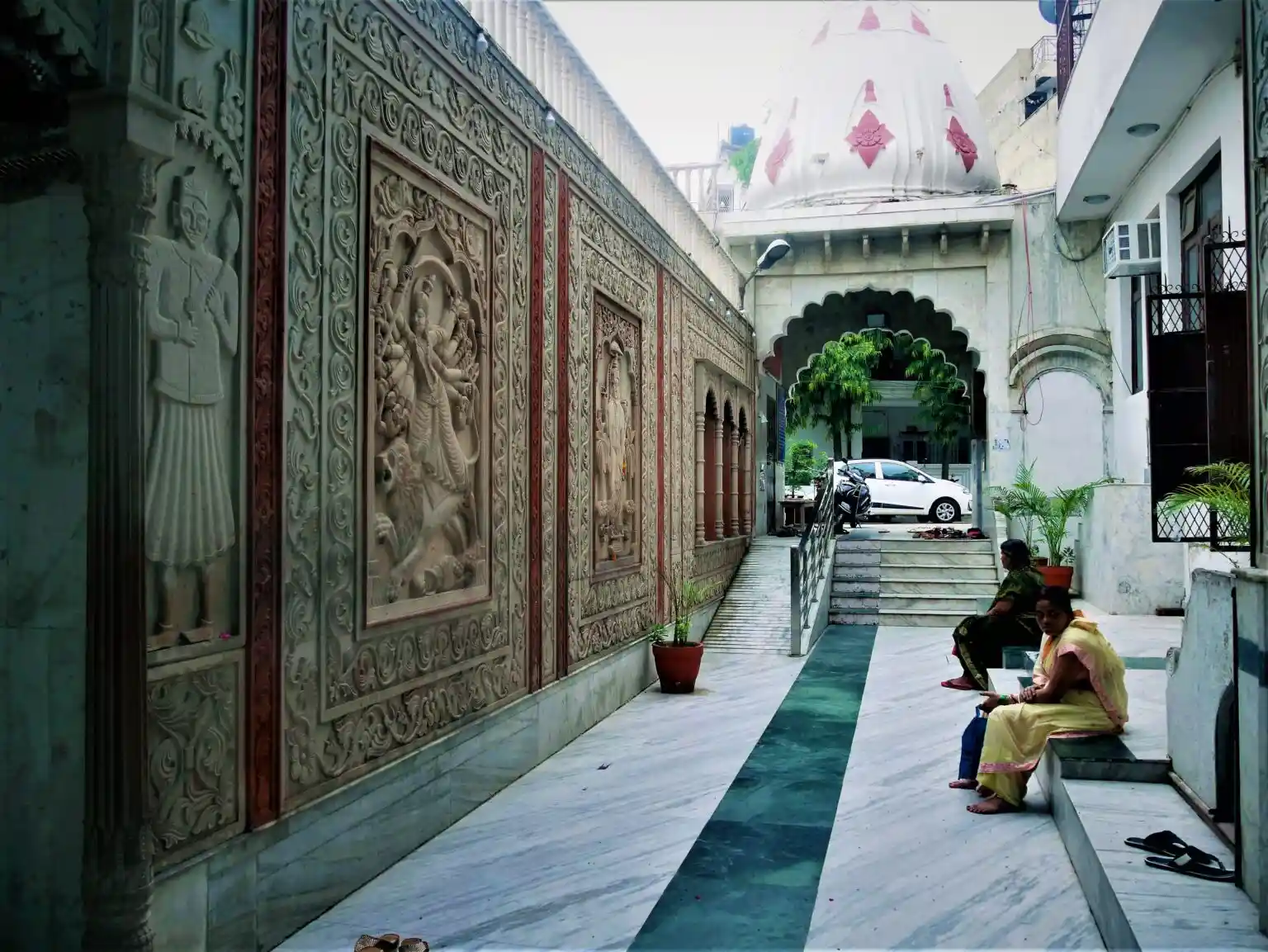
The Yogmaya temple hosts several festivals throughout the year, including Janmashtami, the Kalki Devi Janmohatsav held in July and August. The Khatri’s Kuldevi festival on the eve of Rakshabandhan, and the Navaratri festival in October. These celebrations highlight a blend of the Krishna Bhakti tradition and Shakti worship.
The exact duration of these celebrations is unclear. But it is interesting to note that Basant, the most romantic season after Sawan. Was celebrated at Mehrauli’s Yog Maya Mandir before the Sultanate period (Smith, 2015). While Navaratri is the temple’s most prominent festival. Drawing large crowds of devotees, Phoolwalon ki Sair. Also known as Sair-e-Gul-Faroshan, is another important festival with deep historical significance. It is celebrated with great enthusiasm and devotion.
